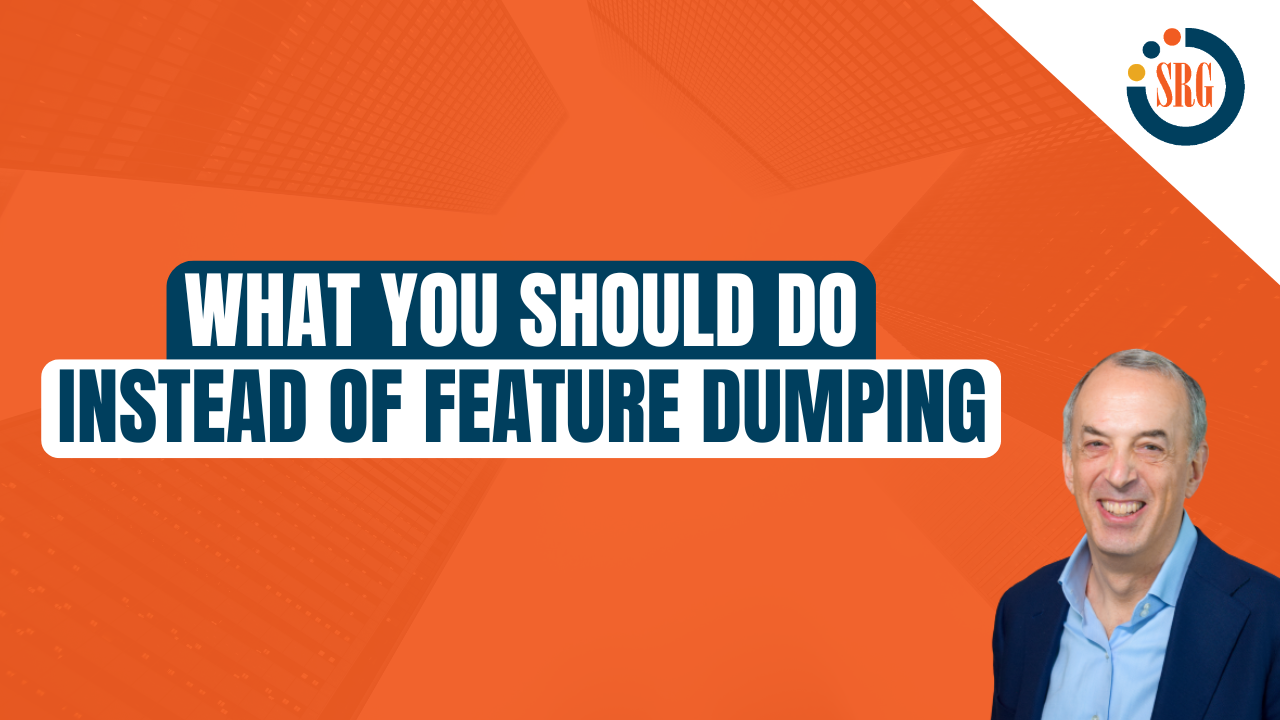Why Feature Dumping Doesn't Work & What You Should Do Instead


One of the worst mistakes salespeople make, even highly experienced ones, is “feature dumping.” Here the sales professional drones on and on about the features of his or her product or service, without really knowing what the buyer really wants. Or maybe the sales professional does know but is unable to customize his or her presentation accordingly.
Feature dumping causes the sales process to get off track because the sales professional is failing to answer the buyer’s most fundamental question: “What’s in it for me?”
To avoid feature dumping, you must master the following selling skills:
- Ask high impact questions to identify the buyer’s needs
- Carefully listen to the answers
- Communicate a solution that ties back to the buyer’s needs
We have previously discussed the critical importance of asking open ended questions for sales to identify buyer needs and carefully listening. Let’s now focus on the essential selling skill of using F-A-B Statements when communicating your solution to the buyer.
What the Buyer Wants
Assuming that up to this point in the sales call you have helped the buyer identify his or her needs by asking questions, it is only natural that the buyer wishes to gain knowledge or an understanding of what it is you can offer that will satisfy these needs. In other words, by first helping the buyer focus on his or her problem, the buyer now wants information on how this problem can be solved.
Feature dumping frequently occurs because the sales professional has talked about his or her product or service before truly understanding what the buyer wants. Feature dumping can also occur when the sales professional does a poor job relating a feature back to the buyer’s needs.
To better explain this point, let’s consider Features, Advantages, and Benefits. Most sales professionals know what Advantages and Benefits are, but many have difficulty using them effectively on a sales call. How you tie Features, Advantages, and Benefits together is critical to effectively communicate to your buyer how your solution addresses their needs.
Features Need Help
A Feature is an integral characteristic of the product/service or solution you offer, but without help Features alone generally will not advance the sale.
Consider a presentation that is all Features. The presentation is not very compelling and may bore the buyer. Furthermore, Features don’t explain how your solution will solve the buyer’s specific problem. You are also leaving it up to the buyer to draw his or her own conclusions regarding how these features will benefit him or her. Some may come up with the right answers, while others won’t bother.
So how do we help Features? Connect an Advantage to the Feature.
Advantages: Too Generic
Advantages explain how Features work or what they do. Advantages are generic, not buyer-specific. So Advantages remain the same irrespective of a buyer’s specific priorities.
What about a presentation that consists of only Features and Advantages? While better than just using Features, you still risk boring the buyer since while you have described in “generic” terms good things about your product/service, you have not made it specific to the buyer.
Advantages may also risk alienating buyers by highlighting features they don’t think they need and potentially raising the cost of the solution without adding any value.
Benefits Sell
Benefits describe how a Feature and Advantage relate to a buyer’s priorities.
Any purchase is dependent on the buyer’s vision of a solution, so it’s critical when asking questions that you uncover details about the buyer’s vision of a solution to meet his or her needs. These details provide you with direction about what Features and Advantages to present and the Benefit the buyer will gain.
What makes a sales presentation compelling to the buyer? The obvious answer is a presentation that clearly explains the “benefits” of your solution. Everyone knows that Benefits increase a buyer’s motivation to buy because they help paint a picture of what will be gained if the buyer purchases your solution.
Some common benefits include:
- Saving time
- Improving productivity
- Reducing costs
- Enhancing image
Benefits are always derived from the buyer, not your product or service. Remember, it’s only a Benefit because the buyer has said it’s essential.
So why not have a presentation that only consists of Benefits? Because sales presentations that are all Benefits will be perceived by the buyer as being unbelievable or too good to be true. It may attract the buyer’s attention and have some emotional appeal, but it will ultimately lack substance. The buyer is being asked to accept the Benefits on faith since nothing is explaining “how.” The how comes from connecting the Benefits to Features and Advantages.
Tying it All Together: F-A-B Statements
To see how Features, Advantages, and Benefits together create a compelling, targeted message for the buyer, consider the following statements:
Statement #1: “Our new Blade server includes the XYZ processor.”
Statement #2: “Our new Blade server includes the XYZ processor which is 10 times faster than our previous model.”
Statement #3: “Our Blade server includes the XYZ processor which is 10 times faster than our previous model resulting in increased team productivity.”
So which statement has more impact?
The first statement is the least effective as it merely states the Feature - the XYZ processor. The second statement adds the Advantage – “is 10 times faster.” While that’s an improvement, increased speed might not be important to this specific buyer. The third statement, an F-A-B Statement, is best because it consists of the Feature, Advantage, and Benefit. Hence, it clearly communicates to the buyer why the specific Feature is important to him or her – i.e., “What’s in it for me?”
Using F-A-B statements is a critical sales skill to master since these statements focus your sales conversation on what’s important to the buyer.
